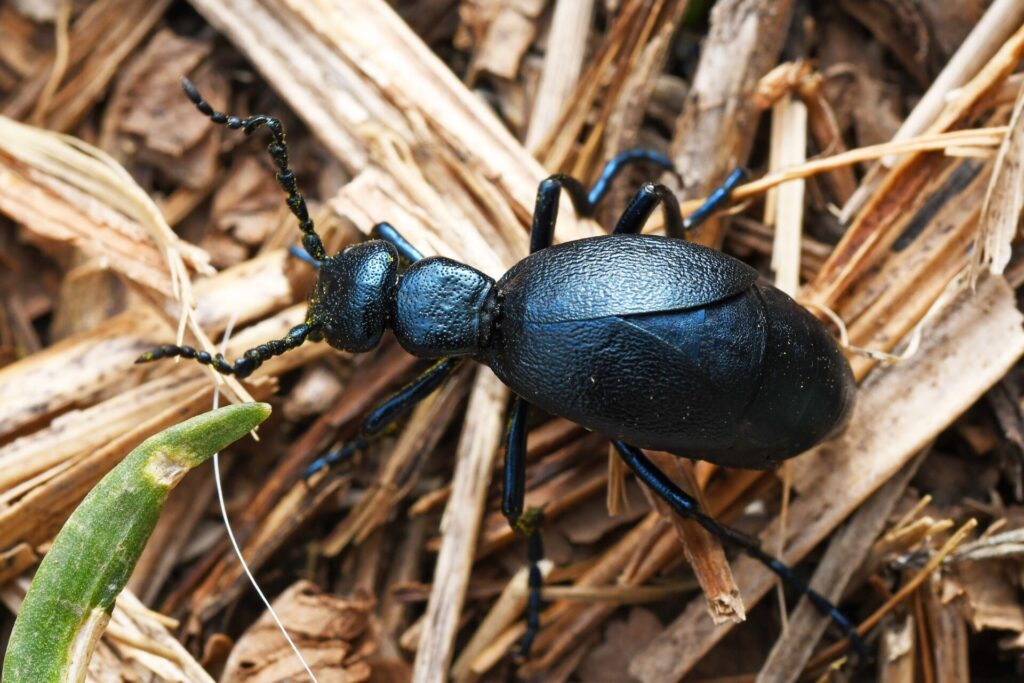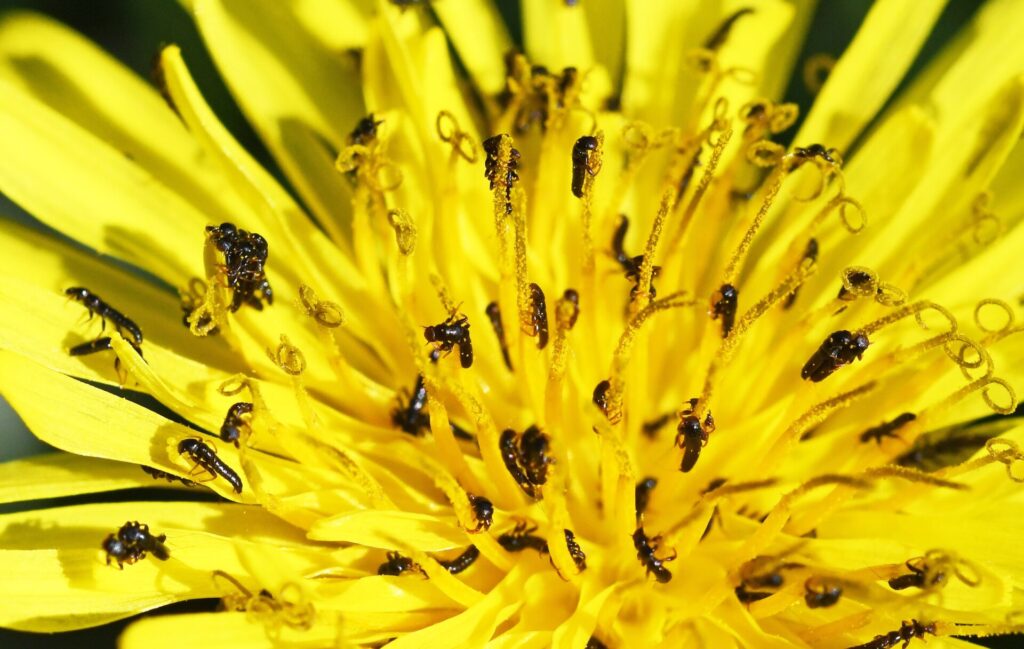This month wildlife writer Jane Adams introduces us to the shiny little beetle whose hitchhiking larvae have a mean bee streak

Images: Liam Olds
The wonders of nature never cease to amaze. From ants nurturing the caterpillars of butterflies to tiny wild bees nesting in bramble stems, it’s mindblowing how much is going on right under our noses.
I recently stumbled across an oil beetle. Beetles make up 40 per cent of all insects and 25 per cent of all animal species, yet we see them so rarely – and this is especially true of oil beetles. But to protect this declining insect, conservationists urgently need to know how many there are and where they live.
It’s thought three species of oil beetle have already become extinct in the UK, and of the five that are left only two – the violet and the black oil beetle – are widespread and out and about in April. There’s also the short-necked oil beetle; though very rare, this species still survives in the south west in a couple of isolated locations. Could there be more that we don’t know about?

Stowaway Triungulins
Oil beetles are large, from 2.5 to 3cm long. With luck, if you’re in the right place at the right time, you’ll spot an adult oil beetle’s glossy blue-black body as it trundles about during the day. In fact, adult females often use compacted human footpaths as a place to excavate their egg burrows, so one might literally cross your path! But don’t pick one up – they extrude an oily substance from their joints when alarmed – hence their name!
Another life stage of the oil beetle you might happen to see is their larvae, or triungulins – so-called for the three hooks on their feet.
Once the eggs hatch, these 1.5 to 2mm larvae make a dash for the nearest flower and then wait for unsuspecting insects to pass so that they can jump on board.
To survive, triungulins need to be transported to the nest of a female solitary bee. Here they will eat the bees’ eggs and pollen supplies before emerging as an adult oil beetle the following spring. It’s an unreliable plan. Thousands of oil beetle larvae don’t make it to their desired destination – and don’t worry, bee populations are never at risk. This is just one of nature’s wonders and has been going on – right under our noses – for millions of years.
How to find and record oil beetles
When to look: Mild days from February to June (they are especially active in April!).
Where to look: Woodland edges, flower-rich meadows, coastal grasslands, dunes, and heathland on mild days from February to June. Look for adult females excavating burrows and triungulins on the petals of dandelions and other wild flowers (see image above).
What to record: Take as many close-up photographs as possible from different angles of any adult oil beetles you find (phone cameras are especially good for this). Photographs of the head and thorax are especially helpful for identification. Also make a note of the location and date.
Where to record findings: Record your findings and submit photos on the Oil Beetle Recording Scheme website. For more info see their twitter account @OilBeetlesUK. And here’s a helpful Buglife ID sheet you can print.

